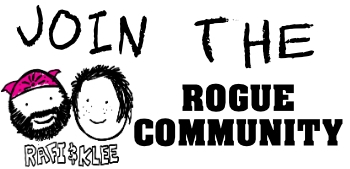Welcome to the Rogue Artists podcast. In today’s episode, I want to discuss finding your creative voice. Many artists are doing this art career thing and are always curious about what’s involved in finding their own voice. When we start, we often need training wheels and look at other people’s art as a reference point, but we shouldn’t make the mistake of working in someone else’s style, or someone else’s creative voice. Instead, we should explore our own creative voice and find our own style.
When I started my art career, I wasn’t sure what having a creative style meant. But then I decided to start working on things I wanted to see, experimenting with different techniques and combining elements I liked from various sources of inspiration. I took things that inspired me, like colors, textures, or marks, and incorporated them into my art. This way, I found my voice, my unique style.
Finding your own creative voice is a personal journey. There is no secret formula for finding it. However, I’d like to share with you some of the things I did to help me find my voice. The first thing I did was explore the things that I was interested in, both in and out of art. I thought about the things that impacted me the most and how I could express them through my art.

The second thing I did was to look for inspiration. I surrounded myself with things that inspired me, such as art, books, music, or nature. I found that surrounding myself with inspiring things helped develop my creative voice and gave me new ideas to explore.
The third thing I did was to experiment with different techniques and mediums. I tried new things and didn’t shy away from making mistakes. I found that experimenting helped me find new ways of expressing myself and pushed me out of my comfort zone.
The fourth thing I did was to create several series in consistent bodies of work. Working on a consistent series helped me develop my creative voice and style in several mediums. Once I liked something, I created a series. It also helped me to see my growth as an artist over time.
The last thing I did was to trust my instincts. I didn’t try to please anyone but myself. I created art that spoke to me; if others liked it, that was a bonus. I found that trusting my instincts helped me stay true to my vision and find my creative voice.
In conclusion, finding your own creative voice is a personal journey that takes time, patience, and experimentation. You can find your unique style and creative voice by exploring the things that interest you, surrounding yourself with inspiration, experimenting with different techniques, creating a consistent body of work, and trusting your instincts. I hope this episode helps you on your own journey of finding your creative voice. Thank you for listening, and until next time, keep creating!








